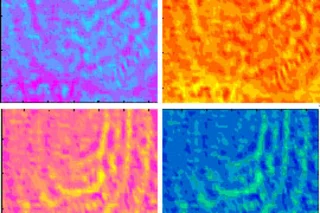For more than a century, investigators have identified suspects by looking at the unique shapes of their fingerprints, carefully noting such details as where the lines end, bifurcate, and diverge. But the few micrograms of sweat and dirt left behind in a fingerprint contain more than a physical pattern: The chemicals in the print are clues themselves, and a new technique shows promise for using this information to make more accurate fingerprint identifications.
The technique is a sort of chemical photography that takes a snapshot of the traces of substances on a person's hands when she leaves a print—everything from the mundane, like caffeine spilled on a coffee-drinker’s fingers, to incriminating particles of explosives. "This is potentially a very valuable procedure for certain cases," says Lawrence Kobilinsky, chair of the science department at the John Jay College of Criminal Justice. "I think it's a significant advancement."
In a paper published ...















